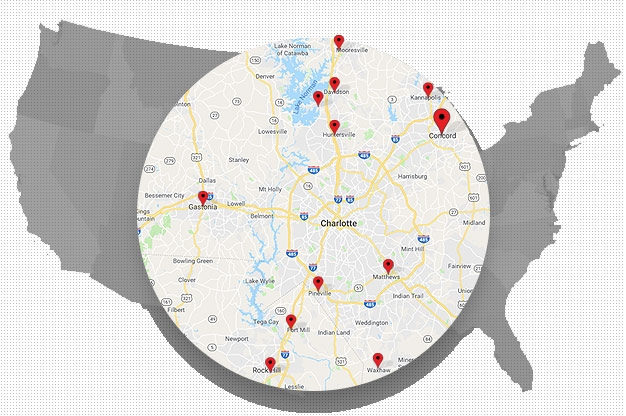What Are the Main Types of Mold Found in Homes?
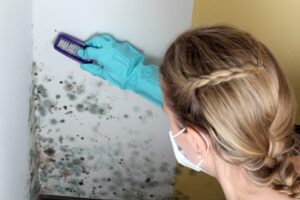
It might surprise you to learn that about 70% of all households contain different types of mold. Mold in homes makes it difficult to breathe and causes other symptoms like coughing, watery eyes, and itching.
Smart homeowners must understand how to get rid of mold and what causes it in the first place. If you suspect your house has mold, the following guide can help you determine the type and what to do.
Read on to learn mold prevention techniques and what types present the most health risks.
Types of Mold That Could Grow in Your Home
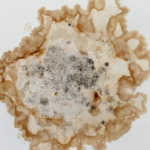
Chaetomium
If your home has suffered water damage, there’s a chance you have an allergenic mold called Chaetomium. This mold typically grows outdoors in the soil but it also loves homes that have leaks or flood damage.
Chaetomium starts its journey by showing up in homes as a white growth with fuzz. It gets darker after a while and homeowners often mistake it for black mold. While Chaetomium looks unsightly, it’s actually quite harmless to human health.
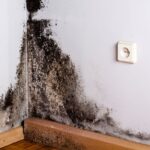
Black Mold
Black Mold (Stachybotrys) is a toxigenic mold found in moist areas such as ventilation systems. If your home has bad air quality and too much moisture, it’s at risk for Black Mold.
This type of mold is also linked to sick building syndrome which affects multiple occupants in places like offices. Only a fully licensed mold remediation specialist can remove Black Mold because of how harmful it is.
If you have the mold in your home, you might experience symptoms like congestion, red eyes, respiratory issues, and skin irritations. Infections might even occur from Black Mold in severe cases.
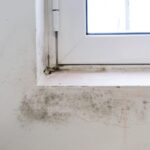
Alternaria
Alternaria is an allergenic mold that typically invades bathrooms and showers. You might also find it during winter months at the bottom of your windows where condensation builds up.
This type of mold grows outdoors naturally all around the world. However, it can trigger issues like asthma and hay fever if it forms inside homes.
To identify Alternaria, look for brown filaments that look silky and similar to hair. It’s important to note that Alternaria spreads very fast, so it’s important to remove it quickly. Bleach kills Alternaira, but a mix of vinegar and peroxide is much safer to use.
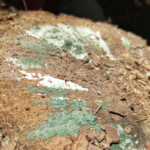
Trichoderma
Trichoderma is another toxigenic mold but you’ll find this type in wet soil around the house. It’s very prevalent and so you’ll often hear it referred to as “common house mold”.
All it needs to grow is organic matter in the house combined with moisture. It appears above the soil in some cases and looks like a thin film.
You’ll typically find this green mold on damp paper and in damp insulation. It can be harmful if it’s eaten or breathed in by humans or pets. You can use hydrogen peroxide to get rid of Trichoderma before it spreads out of control.
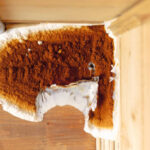
Serpula (Dry Rot)
Serpula is an allergenic mold most often found in damp wooden structures. Some species in nature only feed on wood such as Serpula Lacrymans.
It doesn’t present much danger to humans because it’s only mildly allergenic. However, you don’t want it in your home because it’s very destructive.
If you’ve never seen dry rot, it involves dry wooden frames in homes that crumble to bits. Dry rot occurs because spores infect and destroy damp wood.
Ulocladium
Ulocladium is another type of allergenic mold found in places like wet appliances, drywall, carpet, and bathrooms. You’ve probably seen it in showers, bathtubs, and windows with a lot of condensation.
Washing machines, dishwashers, and refrigerators with leaking hoses also help the mold thrive. To spot Ulocladium, look for a black-colored mold but know that it’s not as harmful as Stachybotrys Black Mold.
It might take a professional eye to tell the difference between Stachybotrys and Ulocladium. If you try to get rid of Ucloadium yourself, use bleach or distilled white vinegar.
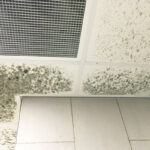
Mucor
You’ll find Mucor around structural materials suffering from water damage. Mucor also shows up in homes via carpets and mattresses.
It’s a white or grey mold that grows quickly and has 40 different species. Most of the Mucor species are allergenic but Mucor Indicus is considered toxigenic. Indicus can cause fungal infections called zygomycosis that kill living tissue.
A condition called mucormycosis is another harmful species that can infect the blood. At room temperature or higher, Mucor grows fast and can sometimes reach a thickness of up to an inch.
Mecudo is another common Mucor species often referred to as “pin mold”. It grows vertically with little heads that resemble sewing pins.
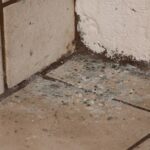
Aspergillus
Aspergillus is a pathogenic type of mold commonly found in the air, HVAC systems, and buildings with water damage. Some types of Aspergillus aren’t toxic but they still cause breathing issues, allergic reactions, asthma, and lung infections.
Other types of Aspergillus are toxigenic and can make chemicals called aflatoxins that can activate cancer growth. Aspergillus fumigatus spores are pathogenic and can cause lethal infections.
You can treat infections caused by Aspergillus with antifungal treatments and corticosteroids. In some cases, infections might require surgery if they’re caused by a single ball of fungus.

Penicillium
Penicillium is an allergenic mold that forms just about anywhere that has moisture. You probably recognize the name as it’s linked to life-saving medicines, but it’s harmful if it grows inside your home.
Look for mold with a greenish-blue color and a velvety surface. Airborne Penicillium spores move with ease and can cause health problems like asthma and heart inflammation. If you spot a small amount of this mold, you can use chlorine bleach to kill it.
Identifying Types of Mold
Remember this guide to identify common types of mold and their causes. If you’ve found mold and experienced any of the symptoms mentioned, call a professional to remove it from your home right away.
You can contact us at Sedona Waterproofing Solutions if you have more concerns about household molds. Not only can we remove mold from your home, but we have other services to help prevent new mold from forming.
Recent Posts
- How Crawl Space Encapsulation Benefits the Environment – An Expert Guide
- 6 Ways Professionals Keep Your Crawl Space in Top Shape
- Structural Repair Solutions for Crawl Spaces, Basements, and Foundations
- Essential Crawl Space Repair Tips Every Homeowner Should Know
- The Importance of Radon Mitigation: Ensuring a Safe Living Environment for Homeowners
Categories
- Basement Mold
- Basement Waterproof Foundation
- Basement Waterproofing
- Crawl Space Dehumidifier
- Crawl Space Encapsulation Cost
- Crawl Space Repair
- Crawl Space Waterproofing
- Encapsulation
- Foundation Repair
- Foundation Waterproofing
- French Drains
- Leaky Basement
- Mold Remediation
- Mold Removal
- Radon
- Slab Jacking
- Sump Pump
- Uncategorized
- Vapor Barrier
- Water Leak
- Waterproofing
- White Mold
Archives
- June 2024
- May 2024
- March 2024
- January 2024
- June 2023
- May 2023
- April 2023
- March 2023
- February 2023
- January 2023
- December 2022
- November 2022
- October 2022
- September 2022
- August 2022
- July 2022
- June 2022
- May 2022
- March 2022
- February 2022
- January 2022
- December 2021
- November 2021
- October 2021
- September 2021
- August 2021
- July 2021
- June 2021
- May 2021
- April 2021
- March 2021
- February 2021
- January 2021
- December 2020
- November 2020
- October 2020
- September 2020
- August 2020
- July 2020
- June 2020
- May 2020
- April 2020
- March 2020
- February 2020
- January 2020
- December 2019
- November 2019
- October 2019
- September 2019
- August 2019
- July 2019
- June 2019
- May 2019

